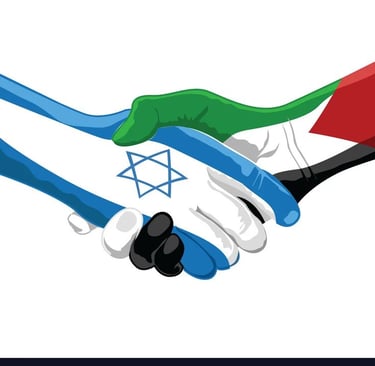Israel-Hamas ceasefire hostages
Israel has released 90 Palestinian prisoners as part of a fragile ceasefire agreement brokered with Hamas. This gesture, coupled with Hamas releasing three Israeli hostages, marks a moment of hope amidst the turmoil.
WORLD
1/20/20252 min read


Israel Frees 90 Palestinian Prisoners as Part of Ceasefire: A New Chapter in the Gaza Conflict?
In a major breakthrough for the ongoing Israel-Palestine conflict, Israel has released 90 Palestinian prisoners as part of a fragile ceasefire agreement brokered with Hamas. This gesture, coupled with Hamas releasing three Israeli hostages, marks a moment of hope amidst the turmoil. The ceasefire, which has garnered international attention, also aims to facilitate the exchange of more prisoners and hostages in the coming weeks.
Prisoner Release: A Humanitarian Gesture or Strategic Move?
The freed Palestinian prisoners include women and minors, with many detained for offenses like stone-throwing and charges related to security. While this move has been celebrated by Palestinians in the West Bank and Gaza Strip, it also highlights the underlying tensions. Families welcomed their loved ones with celebrations despite restrictions imposed by Israeli authorities. For many, this was not just a personal victory but a symbolic one, representing resilience in the face of adversity.
From a geopolitical perspective, this prisoner release can be seen as both a humanitarian gesture and a strategic maneuver by Israel to ease international pressure and maintain the ceasefire's fragile balance.
Ceasefire Agreement: What's at Stake?
The ceasefire agreement, backed by international mediators like Egypt, Qatar, and the United Nations, outlines a phased plan to de-escalate tensions. Over the next six weeks, Hamas is expected to release more Israeli hostages, while Israel will free an estimated 2,000 Palestinian prisoners. This is a high-stakes exchange aimed at preventing further bloodshed and addressing humanitarian concerns.
However, critics argue that such agreements, while essential, are often short-lived and fail to address the root causes of the conflict. Both sides remain deeply distrustful of one another, raising concerns about the ceasefire's longevity.
Humanitarian Aid Flows into Gaza
As part of the ceasefire deal, humanitarian aid has started to pour into Gaza. Over 600 aid trucks have crossed the border, delivering essential supplies like food, medicine, and fuel to the war-torn region. For Gazans, who have endured weeks of relentless airstrikes and blockades, this aid is a lifeline. The international community has emphasized the need for sustained access to humanitarian assistance, urging both Israel and Hamas to uphold the ceasefire.
Public Sentiment and Global Reactions
The prisoner release and ceasefire have sparked mixed reactions globally. In Palestinian territories, it is seen as a small but significant victory, while in Israel, it has stirred debates about national security and the risks of releasing prisoners who may rejoin militant activities.
Social media platforms are abuzz with discussions about the ceasefire, with hashtags like #IsraelPalestineCeasefire, #FreePalestine, and #HostageExchange trending worldwide. The global focus on this issue underscores the urgency of finding a lasting solution to the decades-long conflict.
Will This Ceasefire Hold?
While the current ceasefire is a welcome reprieve, history suggests that such agreements are often precarious. The root issues – territorial disputes, mutual distrust, and political fragmentation – remain unresolved. For peace to be sustainable, both sides must commit to dialogue and address the broader socio-political and economic challenges fueling the conflict.
Conclusion
The release of prisoners as part of the Israel-Hamas ceasefire is a significant step, but it is only a small piece of a much larger puzzle. As the world watches, the focus must shift from temporary truces to lasting peace solutions that address the core issues of this decades-long conflict. Only then can we hope for a future where headlines are not dominated by war but by coexistence and reconciliation.